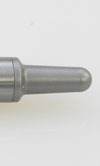How to adjust your sets
 In our May issue, we spoke about the challenges of pushrod fitment issues and how to find the proper avenues for combating strength and lightness problems. Beyond fitment though, there are the closely linked issues of pushrod adjustment and the inevitable challenge of cost.
In our May issue, we spoke about the challenges of pushrod fitment issues and how to find the proper avenues for combating strength and lightness problems. Beyond fitment though, there are the closely linked issues of pushrod adjustment and the inevitable challenge of cost.
Fine adjustment will always be needed in the valvetrain to allow for manufacturing and assembly tolerances of such a long chain of interacting components. Typically for pushrods, much more adjustment than that is needed.
In all but the most expensive forms of motorsport, components such as cylinder heads and blocks have to be re-used many times, and it is typical to skim firefaces in order to maintain good cylinder seal.
This can be a big issue in NASCAR, for example, with heads and blocks that are used a number of times in their service life. Every time these surfaces are skimmed flat - even though be only a few thousandths of an inch may be removed - that changes the distance from the crank (located by the bottom of the crankcase) and the rocker pads at the top of the head.
Consequently, there has to be more adjustability in the valvetrain than just to allow for the machining and assembly tolerances of new parts. Plus, they also need to be light and very stiff, so it's a problem!

That means the cam-to-rocker distance will vary much more than typical manufacturing tolerances of a single chain of components and, in some cases, this adjustment is taken up with a screw adjustment in the rocker. Still, for higher performance parts, the extra weight and reduction in stiffness at the rocker for such an arrangement can't be tolerated.
The typical alternative is to produce a number of different length pushrods for the coarse adjustment, then to have the final fine adjustment in the tappet. This solution requires many multiples of sets of pushrods for an engine-build operation, produced in a range of sizes. There is an obvious logistics and cost trade-off inherent in the plan.

An engine builder working in motorsport can't be delayed because the correct length pushrod is not at hand, but doesn't wish to buy, say, 20 pushrods for every one the builder intends to use.
While larger operations can stand having plenty of pushrod stock at hand, a smaller engine build concern can't justify such money being spent. They may, therefore, take a hit on the optimum design (having varying height inserts perhaps) or they may take the hit on the engine build time and order pushrods to specific length for a specific build.
There are manufacturers that have developed their businesses along these routes and have very fast turnround times on specific-length pushrod orders; the downside of this type of manufacture is the cost implication.
Therefore, just considering the major design constraints of low mass, high stiffness, small diameter, precision, high-surface stress ends, together with high volumes and graduated but rapid manufacture, there has to be a huge amount of effort and resulting technology in the manufacture and fitment of the 'simple' pushrod.
Is the pushrod a 'blast from the past'? In some sectors of the racing world, perhaps, it is, but low-tech and crude? Those words simply don't apply.
Figs. - Manton Pushrods
Written by Anne Proffit